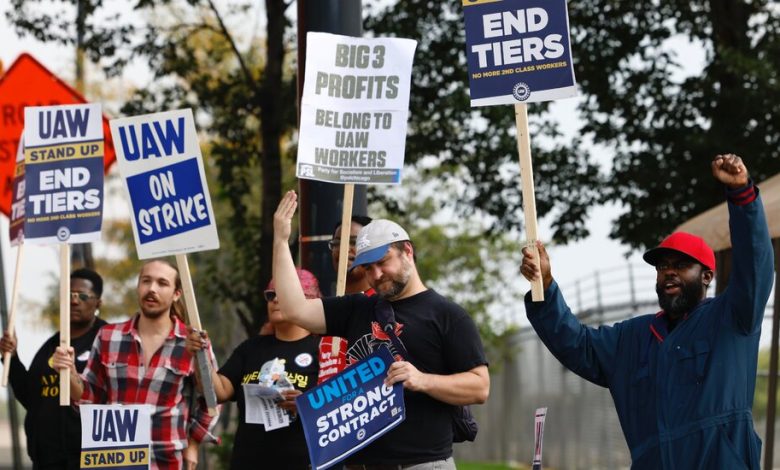How strikes are (and aren’t) reflected in the jobs report.

Three of the country’s major automakers are facing an expanding strike that started on Sept. 15. Hollywood producers and screenwriters reached a contract agreement late last month to end a 148-day walkout, but striking actors are still locked in negotiations.
How all that is reflected in government employment data is complicated.
The government counts workers who go on strike as “employed but not at work.” That means the strikers should not have a direct effect on the unemployment rate. But the impact of the strikes could be seen in the monthly jobs report’s separate count of payroll jobs. And the walkouts can cause what analysts describe as collateral damage.
For example, companies that provide services to film crews may be idled, and automakers’ suppliers could see a decline in orders, prompting layoffs.
The jobs data counts anyone who was paid during the survey’s reference week — in this case, the week of Sept. 10 — as being at work. But if the auto dispute is not resolved by mid-October, the impact could begin to show up in the next jobs report.





